- News
- Reviews
- Bikes
- Components
- Bar tape & grips
- Bottom brackets
- Brake & gear cables
- Brake & STI levers
- Brake pads & spares
- Brakes
- Cassettes & freewheels
- Chains
- Chainsets & chainrings
- Derailleurs - front
- Derailleurs - rear
- Forks
- Gear levers & shifters
- Groupsets
- Handlebars & extensions
- Headsets
- Hubs
- Inner tubes
- Pedals
- Quick releases & skewers
- Saddles
- Seatposts
- Stems
- Wheels
- Tyres
- Tubeless valves
- Accessories
- Accessories - misc
- Computer mounts
- Bags
- Bar ends
- Bike bags & cases
- Bottle cages
- Bottles
- Cameras
- Car racks
- Child seats
- Computers
- Glasses
- GPS units
- Helmets
- Lights - front
- Lights - rear
- Lights - sets
- Locks
- Mirrors
- Mudguards
- Racks
- Pumps & CO2 inflators
- Puncture kits
- Reflectives
- Smart watches
- Stands and racks
- Trailers
- Clothing
- Health, fitness and nutrition
- Tools and workshop
- Miscellaneous
- Buyers Guides
- Features
- Forum
- Recommends
- Podcast
feature
 Project practical 12.JPG
Project practical 12.JPGProject Practical: How to build a fuss-free everyday bike
Sleek, high-tech bikes are all very well, but what if you want a bike that doesn't require special clothes and clickety-clackety shoes? I set out to make a practical bike that used the best of modern technology.
I was chatting with bike company media manager Chris Garrison at a bike show and the topic rambled round to how inconvenient us bike geeks make cycling. She’d had a revelation while riding an electric bike that was kicking around her office and loving the sheer ease with which you could hop on it and do stuff. In my case it had been borrowing my step-daughter’s B’Twin Hoprider 520 hybrid (£320) for nipping to the shops.
Both the bikes we’d been riding came with all the trimmings: rack, mudguards, lights, chainguard, a built-in lock and even a kickstand. That means riding them is as simple as getting them off the rack and setting off. No looking for shoes, no swapping lights from another bike, no worrying about getting soaked from road spray if it rains, no need for special trousers, no need even to lug around a D-lock if you’re just stopping at the shops for a few minutes. The B’Twin even has a basket (not a stock item but dirt cheap to add) so small shopping trips don’t need panniers.
This, it turns out, is brilliantly liberating. Step-daughter rides her B’Twin to school every day. She just pops her backpack in the basket and away she goes.
I had to have something as simple and practical. Project Practical was born.
The advantages of belt drive
The starting point was a Raleigh hybrid I had kicking around because it had been discontinued before I had a chance to review it and I hadn’t got round to sending it back because I’m a slackarse.
What made this bike perfect for Project Practical was its combination of a Gates belt drive and SRAM Automatix two-speed hub.
The Gates Carbon Drive, to give it its full name, is a toothed belt that runs between wide sprockets in place of the usual chainring and rear sprocket. It’s clean and silent, needs no oil and doesn’t have spiky bits that’ll eat your trousers, so you don’t need a chainguard. It needs a hub gear if you’re not going to run a singlespeed, but you can get sprockets to fit just about any hub gear you can think of. It’s brilliantly simple.
You might be wondering why you don’t see Gates belt drive bikes more often. The belt and sprockets are expensive, and the frame needs a separable seat stay so you can change the belt when it wears out. As Raleigh product manager Terry Blackwood puts it, “I want to make a bike like this as a £300 three-speed, but by the time you’ve put on the belt you end up with a £600 bike.”
This is a pity because in use the belt drive is indistinguishable from a chain, except for the lack of greasy marks on your jeans and frayed right-hand cuff.
Raleigh still makes a chain-driven version of this bike, the Strada 4, which can be found for as little as £440. If you fancy a belt-drive bike and need an 18in frame, there are a few of the belt-drive version still in retailers for £450.
Two-speed self-shifting
The Automatix hub is similarly convenient. It’s a two-speed epicyclic gear with a centrifugal clutch to do the shifting. You get to about 10mph and it shifts up for you, which means no thinking about gears and no shifter to clutter up the handlebars.
In many places that wouldn’t be very practical, but it’s fine here in Cambridge where all you really need is a getting-started gear and a cruising gear. It’s only downside is that, for me, it shifts up at a bit too low a speed. It’s possible to modify this, but it involves taking the hub apart and bending an internal spring so I’ve not yet been brave enough.
Aside from that, though, the Raleigh is a typical striped-down British hybrid. I’m told by various bike industry contacts that attempts to sell fully-equipped bikes in the UK fall flat. Even when it’s a bike for simply getting around, people don’t want to pay the extra for mudguards, a rack and so on.
This is, I submit, utterly bonkers.
If a bike comes with a rack and mudguards, the extra cost will be less than adding them later and your arse will be dry from day one. Taking at face value the claim that people don’t buy full-fat bikes, you have to wonder what kind of delusion of everlasting sunshine these people are living under. This is Britain, ferchissakes. It rains a lot.
Evans Cycles has a big range of hybrids compared to most online retailers. Counting bikes at Evans’ website, only about a fifth of hybrids have mudguards. So there you go; 80 percent of Brits are delusional about the weather.
I don’t like a wet arse, so I set about turning my Raleigh into the ideal round-town bike.
Building Project Practical, part I
Equipped with a determination to have a get-on-and-ride bike, I gathered the first set of parts necessary to turn a bare bike into something useful for everyday riding: mudguards, rack, lock and lights.
First, mudguards. There are a lot of options out there, but if you want to stay as dry as possible, SKS Longboard guards (£23.99) provide maximum coverage. The front guard almost touches the ground, so your feet stay dry, and the rear keeps spray off anyone behind you.
The Raleigh has disc brakes, so its mudguard eyes are in unusual places. That meant some careful bending of the front stays to get them into the clamp bolts, but the rear stays just weren’t long enough. Fortunately I had a Bontrager NCS mudguard kicking around with adjustable stays. A few minutes’ work with a Dremel cutting disc and I had a stay that was long enough for the job.
A practical bike needs carrying capacity, so on went a rack. Another niggle: the rack eyelets on the frame were oddly positioned so I grabbed a seat clamp with built-in threaded holes to put them in a more sensible place.
Going Dutch
One of the things I liked most about my step-daughter’s bike was not having to lug round a lock because it has one mounted on the frame. Variously called a Dutch lock, frame lock, wheel lock or nurse’s lock, this is a horseshoe-shaped contraption that mounts on the seatstays. Some frames have threaded mounts for a Dutch lock, but they’ll fit standard frames too.
Axa and Abus are the big names in Dutch locks. My step-daughter's bike has an Axa Defender (£17) so for variety I went for an Abus Amparo (£27.47) on the Raleigh. Both offer the option of a key that stays with the lock when it’s open so you don’t even need to find your keys when you’re nipping to the shop.
A Dutch lock isn’t as secure as a top quality D-lock but it’ll stop a casual thief from riding away on your bike. If you want more security, you can get add-on chains and cables that slot into the lock so it can be attached to a fixed object. The Abus Amparo chain (£18.22) comes in a pouch that hangs on your rack.
Blinded by the light
That leaves lights. Trying to keep the cost of the changes under control I slapped on an old Exposure Maxx-D I had kicking around, with a Red Eye cable rear light (£27.99) that runs off it. (My Maxx-D's a Mk 4 or thereabouts — the much brighter and cleverer Mk 8 is £269). I know, not cheap if you’re buying from scratch, but the Exposure system has the big advantage that you only have to remember to charge one thing. Nevertheless, the Maxx-D is overkill for the road. If I were buying new, I’d get an Exposure Strada (£202.46) for its road-specific beam.
Exposure isn’t the only system that will run both front and rear lights from one battery. Magicshine offers a set of its MJ-858 front light, 4.4Ahr battery, MJ-818 rear light, cabling and charger for £84.95. A separate battery isn’t as elegant as an Exposure set-up, but you can hardly gripe for the price.
If staggering rear visibility is the most important thing to you, then you can run a Hope District Plus rear light (£59.99) with Hope’s R2 Epic front light and four-cell battery (£179.99).
And there Project Practical rests for the moment. I have a few ideas for tweaks, improvements and extra features that I'll come back to in a future part two. Meantime, feel free to share your favourite practical bike ideas in the comments.
John has been writing about bikes and cycling for over 30 years since discovering that people were mug enough to pay him for it rather than expecting him to do an honest day's work.
He was heavily involved in the mountain bike boom of the late 1980s as a racer, team manager and race promoter, and that led to writing for Mountain Biking UK magazine shortly after its inception. He got the gig by phoning up the editor and telling him the magazine was rubbish and he could do better. Rather than telling him to get lost, MBUK editor Tym Manley called John’s bluff and the rest is history.
Since then he has worked on MTB Pro magazine and was editor of Maximum Mountain Bike and Australian Mountain Bike magazines, before switching to the web in 2000 to work for CyclingNews.com. Along with road.cc founder Tony Farrelly, John was on the launch team for BikeRadar.com and subsequently became editor in chief of Future Publishing’s group of cycling magazines and websites, including Cycling Plus, MBUK, What Mountain Bike and Procycling.
John has also written for Cyclist magazine, edited the BikeMagic website and was founding editor of TotalWomensCycling.com before handing over to someone far more representative of the site's main audience.
He joined road.cc in 2013. He lives in Cambridge where the lack of hills is more than made up for by the headwinds.
Latest Comments
- Secret_squirrel 2 min 18 sec ago
Alternative view - since it was probably the driver who hit the horn - maybe she goaded him into it?...
- Secret_squirrel 3 min 49 sec ago
Inserts are always smaller than the tyre regardless of pressure - they have to be so you can get the tyre on and off relatively easily. So they...
- Hirsute 12 min 18 sec ago
Although since September:...
- Steve K 28 min 49 sec ago
The Worlds - and the Olympics - feel very different to the other options, because they move around and can be very different races one edition to...
- Rendel Harris 31 min 26 sec ago
Well, fingers crossed that he isn't yet dead because yesterday the Supreme Court ordered that he should be returned to the USA.
- hawkinspeter 2 hours 41 min ago
I've got a pair of these shoes in the wide fitting and they're very comfortable. I also bought the Vaypor inner soles to go with them which come...
- SecretSam 3 hours 8 min ago
I think it's also worth noting that shoe fits change between shoes within the same brand's range - for example, my bike fitter told me that my...
- Secret_squirrel 3 hours 38 min ago
Seems a bit of a missed opportunity with such a deep unit not to include a little side window for better coverage....
- Paul J 3 hours 46 min ago
No video of the pro-am bike race? Shame.

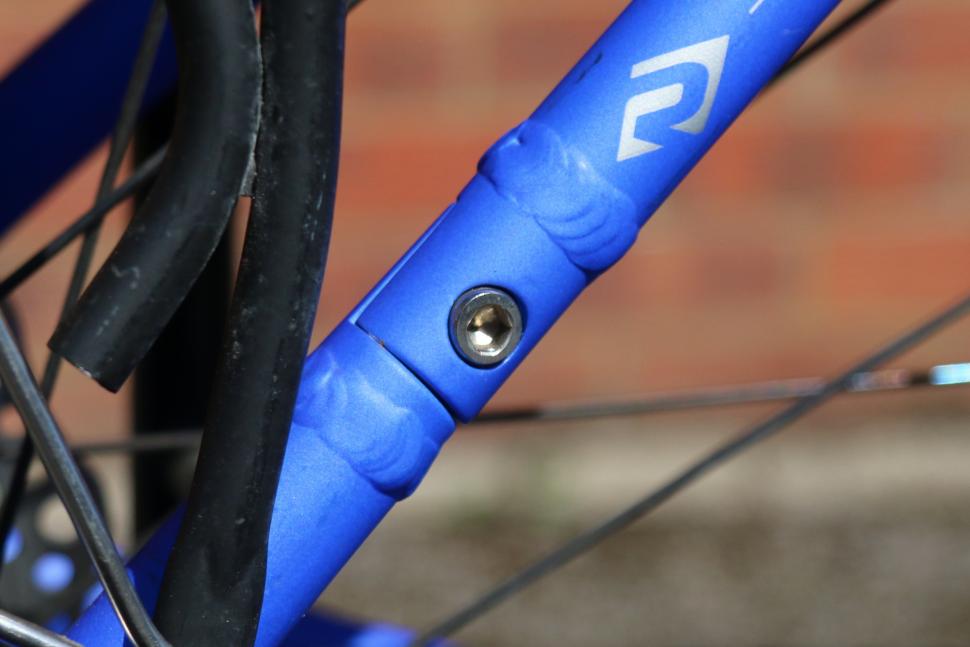
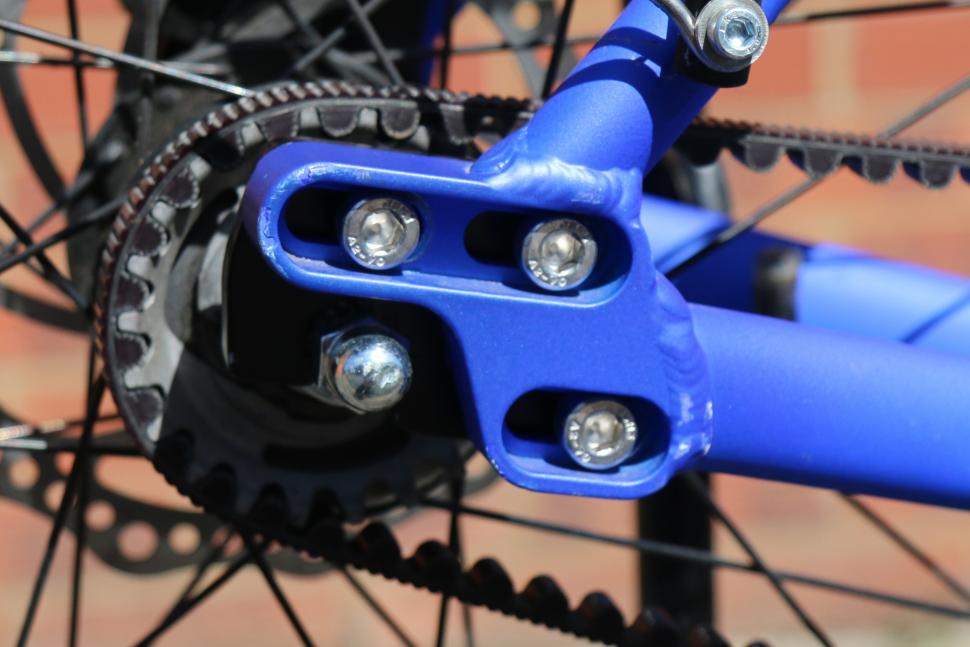

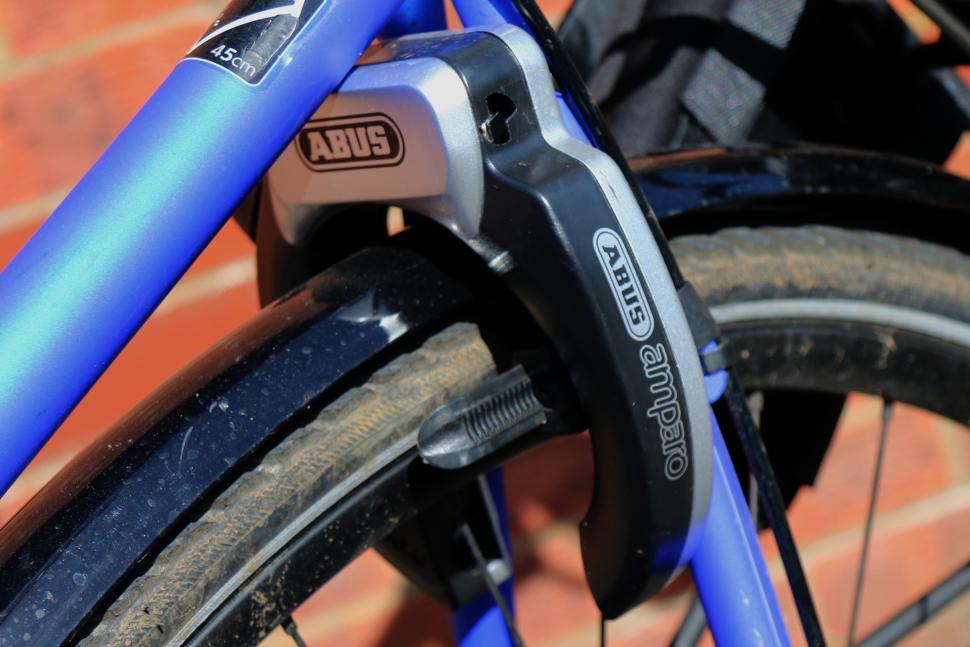
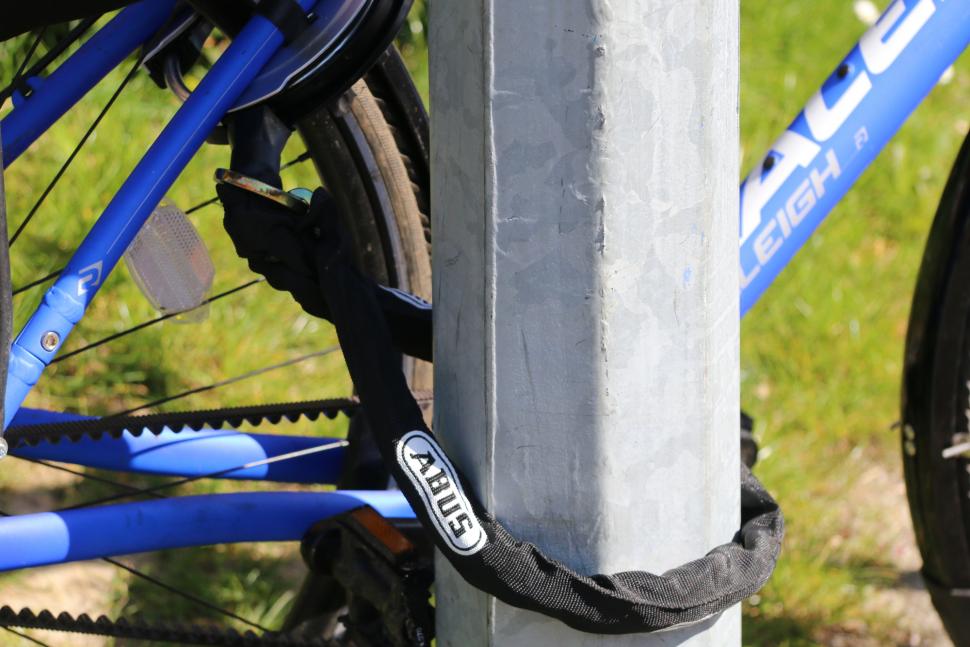
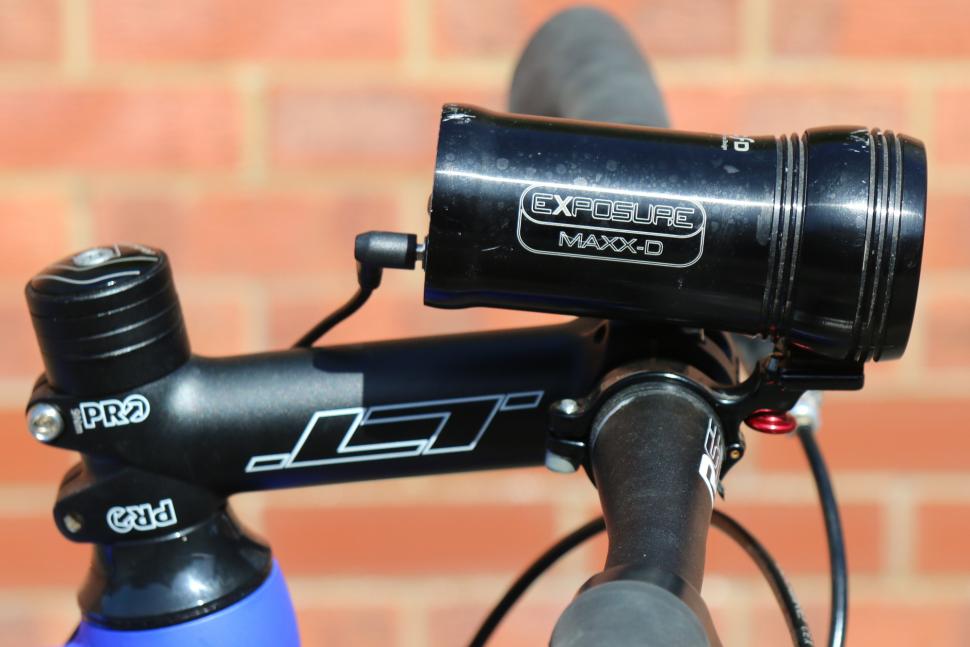
Add new comment
40 comments
Love this bike for the fact its a bike you can just use. As my username suggests long rides are a rare luxury but have done 20 miles this week on my pannier rack fitted on-one inbred on school run etc. Think the big thing is pedals ypu don't require specific shoes for.
Ref the dynamo lights can you get ones which stay on for a while when you stop. Im sure I have seen them but lbs denies existence.
Yes - I think most decent ones do this. I quite like the Philips SafeRide LED Dynamo as a front light - very bright, efficient and with a good illumination pattern and has a "stand light" which is what you are after - soemthign that stays on for a while after stopping. The mounts that they come with a terrible though and the wire they use needs very careful looking after if you don't want loose connections.
Almost anything by Busch & Mu:ller will be great as well. http://www.bumm.de/produkte.html
I currently use a Supernove E3 Pure 3 (if thats the correct name) paired with a E3 rear light. http://supernova-lights.com/supernova-e3-pure-3 They came with my bike and seem pretty good. I prefer the large illuminated area of the rear B&M lights but its plenty bright enough and has a standlight. If I am mostly using my lights to be seen by (rather than when riding on unlit roads) then I can run my USB charger in paralell from the dynamo with a commensurate drop in brightness.
I can see how a frame lock like that could be handy for quick off-and-on stops in quiet (safe) locations. I used one on a hire bike in Copenhagen, where the bike was fairly un-enticing to a thief and there were millions of bikes everywhere.
But there's no way in the world I'm going to rely on it for even a minute in the kind of inner city locations like the ones where I use my bike, and even in a quiet village I'm not going to leave my bike locked like that while I disappear off for a few hours.
Then I struggle to see how your "more secure" chain is any lighter, more convenient, or more secure than a d-lock on a bracket on the frame. It looks less secure. I want my chain or d-lock going through the bike frame (and not the bit which now comes apart!).
So if I'm going to carry a sturdy (but heavy and slightly more fiddly) lock anyway, then I might as well not bother with the additional expense and faff of a lock I don't need, even if it is attached permanently to the bike.
I'd agree that sturdy tyres are worth a mention. I know some people find the marathons slightly more sluggish, but I haven't really noticed, and the peace of mind is totally worth it.
Not bad, but for hop-on-in-any-clothes a stepover would be better. Not rigid enough for you? Moulton has the answer...
And the folk saying use a dynohub are entirely on the money IMHO: no fuss means no faffing about taking your lights on and off and charging batteries.
Bang on. I run two Moultons as 4 season commuters set up in this way, with full guards and racks. The Moulton ws designed as a transport bike. the integrated racks and luggage are brilliant as is the suspension.
Both of mine are fitted with relatively budget dynamo lights for less than £70 per bike including a new wheel with generator bult in - http://cyclingsouthtyne.blogspot.co.uk/2015/12/dynamo-lights-on-budget.html
Brilliant, and timely. This is the sort of bike that people will ride come the “cycling revolution”.
Personally, I’d go for a hub gear with a chain and chainguard. Hub brakes would complete the low maintenance ethos.
I’ve always though that the "British" take on a Dutch bike offers a good compromise. You don’t mention tyres. With hub gears/brakes wheel removal is more difficult so some serious puncture resistant tyres are a good idea (Schwalbe Marathons?)
For lights I prefer the ease of removable battery lamps. They’re cheap and powerful. I keep a pair of Knogs (madam!) in my pannier for emergencies.
http://road.cc/content/review/113758-kona-dr-good-utility-bike used to fit the bill.
Though quite heavy, the front rack can carry a couple of shopping bags or a work bag, without needing more specific bike kit. Carrying 10kg is perfectly possible. Mounting the rack to the head-tube would be better, especially if an open standard QR mount (IKEA?) could be used.
B'TWIN 500 Dual Platform leisure bike pedals or similar, allow for using both street shoes for short distances & spds for going further.
Fit wide tyres to cope with going over the inevitable pothole, without puncturing.
confused as to why you wouldn't go with a dynamo setup as well... I wouldn't feel comfortable leaving an expensive light attached to the bars.
the mod on the automatix hub is dead easy, I did it on my norco city glide. I found that the shift point was completely wrong, changing up after a few turns of the pedals. it's a shame it's not externally adjustable. otherwise it's a pretty good option.
I'd agree with oldstrath - Dynamo is the way to go, hub generators are reliable and affordable.
I would also question the belt drive over a traditional chain plus chainguard if you are trying to costs manageable.
A two speed hub might be fine in Cambridge, but even in relatively flat Leicester I sometimes find a three speed rather demanding!
Why not a dynamo, then you could use road specific front and rear?
Pages